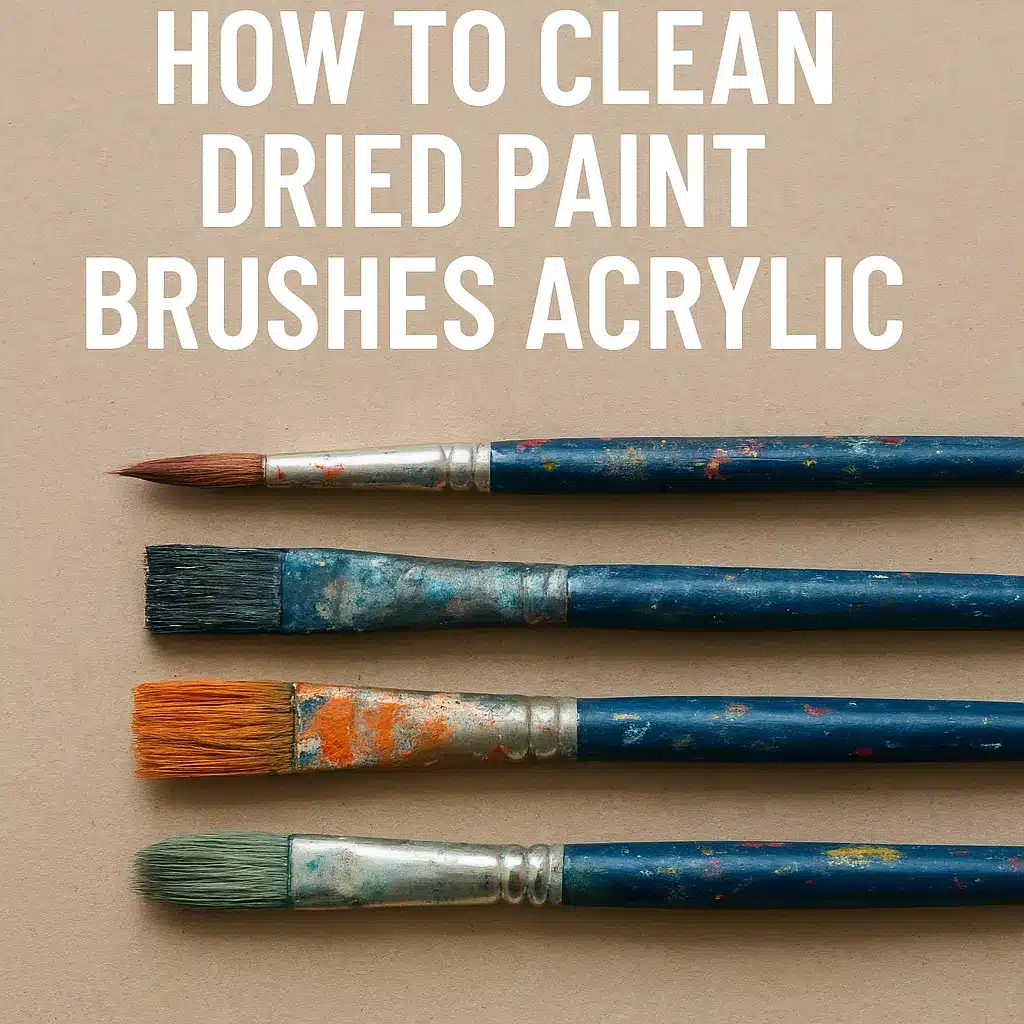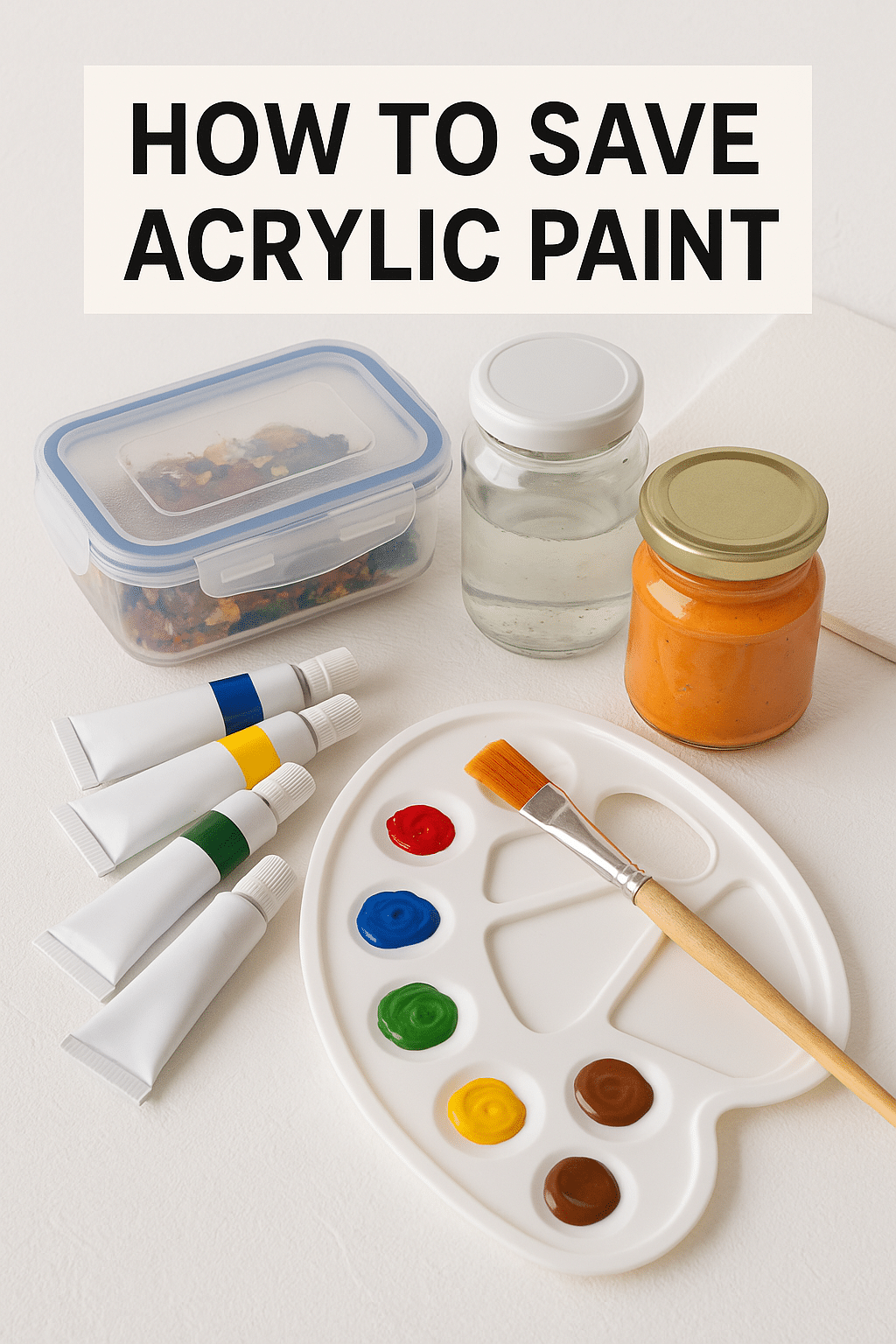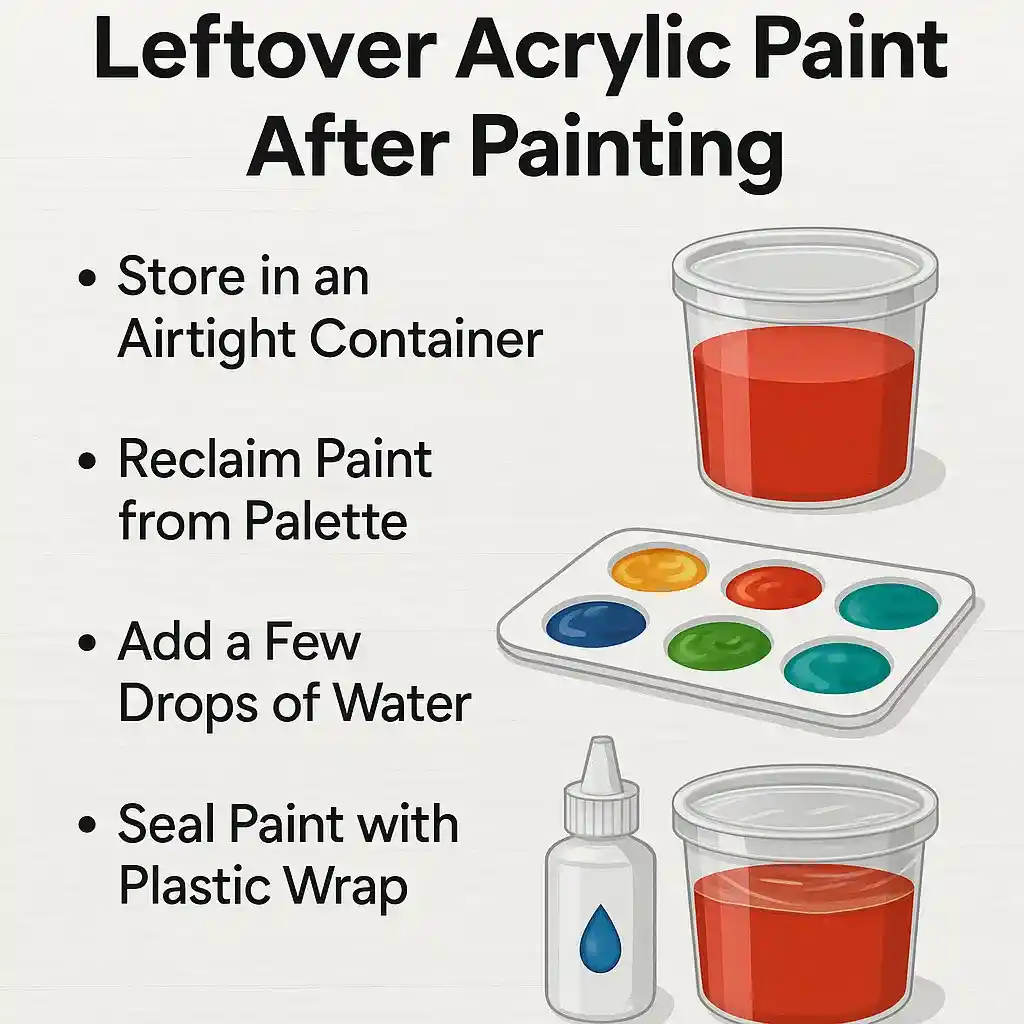Art collectors often wonder if a painting is oil or acrylic. This can be tricky, especially with large panoramic pieces. Both media may look the same despite their differences. This is especially true when painting, age, or light play a role. Don’t be foolish with glow or texture. Shiny acrylic and flat oils can be misleading. Sometimes the smell of paint or smooth brush strokes can help. But what if the painting is behind glass or looking at it online?
On top of that, misinformation and conflicting advice also make things complicated. And let’s be honest—no one will risk hurting paintings to find out what it is. This article will break down the significant difference between oil and acrylic paintings. We will share safe, practical suggestions to help them with their divorce. This helps you discover the medium through a medium, whether you buy, sell, or enjoy art.
1. Surface Finish: Glossy or Matte Isn’t Always What It Seems
The appearance of the painting surface can be deceived. While Gloss or Matte offers Finnish clues, they are not always a reliable way to explain oil and acrylic.
Varnish can either be a medium
Many artists use varnish to protect their work. This coating can change the surface’s appearance. A light lacquer on acrylic may look like oil, while a matte lacquer on oil can dull its natural glow. This surface eliminates an incredibly standalone indicator.
Light and angle-distorted presence
Light can make a painting brighter or dimmer. This effect is strong under artificial or gallery lighting. A painting might appear shinier in photos or under bright lights than it does in person. This is why it is difficult to rely on easy reflection alone.
Start acrylic mats, oil bends toward brightness.
Acrylic typically dries to a matte or semi-matte finish. In contrast, oils stay shiny and rich. But this rule often changes with lacquer or mixed media used by modern artists.
Observe the uneven glow on the surface.
In oil paintings, you can spot glossy patches, especially in older works. These shine differently because of uneven drying or pigment variations. Acrylic, usually dry and smooth, is not modified with media.
2. Texture and Brushstrokes: What the Surface Can Reveal
The paint of paint and the way brush strokes appear can provide valuable clues. Each medium behaves separately when it dries, affecting the final surface look.
Achryl quickly dries and faster punches
Since acrylic paint dries quickly, it preserves sharp, defined brush marks. Artists who work in acrylic may not mix longer colors, so texture may seem more layered or correct than the oils.
Oil is easily mixed with soft infections
Oil paint dries at a very slow pace, giving artists more time to fix colors on the canvas. This shade has a soft texture. It blends gradually, especially in skin tones and the smooth transition of the sky.
Built paint and imposto look different.
Both media work for impasto techniques (thick, structured paint). However, oil keeps a creamy, soft edge thickness. Acrylic impasto often dries hard and more plastic, sometimes with more defined edges.
Cracks and aging of the surface offer a texture signal
With time, oil paintings can develop cracks. This happens because they are flexible and take a long time to dry. Acrylic stays stable when dried. It rarely cracks unless stored incorrectly or is very old.
3. The Smell Test: Does the Painting Give Off a Scent?
The smell of a painting can sometimes explain what kind of paint was used. Although it is not always practical, this method can give a useful signal – if you can smell it.
Oil paintings often have a dull scent
Oil-based paints, like those with flaxseed oil or turpentine, smell strong. The odor can stick around even after you finish using them. If you notice a smell like a subtle soil or chemicals, it can point to an oil painting.
Acrylic paint is usually odorless
When dried, acrylic paint is usually odorless. Even when painted new, the smell is light and fades quickly. If there is no noticeable scent, there is a possibility that you are working with an acrylic piece.
Lacquer can confuse the senses
Some lacquers used on any medium can emit their odor. This can affect your decision, especially if you are completely dependent on scent. Be sure to consider whether you can smell lacquer instead of paint.
It is not always safe or possible to smell art
You may find it hard to use the smell test in galleries or museums, especially with art that has many frames. Don’t smell valuable or delicate art directly. It can damage the surface or be seen as disrespectful.
4. Check the Sides and Edges of the Canvas
The edges of a painting are often not taken care of, but they can reveal important details of the medium used. A quick inspection of the pages can offer clues that do not appear on the front.
Acrylic paint often wraps around the edges
Acrylic artists tend to paint across the canvas sides, even using primer like gesso for clean edges. This is common in modern or vapor pieces. The quick drying time lets them move and turn the canvas without smudging the surface.
Oil paint can be thick and more structured on the sides
The oil paint is applied slowly and in thick layers. You might notice uneven buildings, dry lines, or fewer cracks at the edges. This is common in older paintings.
An incomplete side can reveal the base color
If the edges are not painted, you can use the base color or primer. Acrylic gesso usually appears light white and smooth. In contrast, traditional oil-primed canvas can be off-white or a bit yellow.
Framing can hide counting signals
In frame-rich pieces, the edges are often covered. This makes it hard to see the clues hidden there. If possible, check the painting before there is a frame, or look for a gap between the canvas and the frame.
5. Age of the Painting: Does Time Offer a Clue?
Time reveals physical signals in a painting. By observing these signals, you can tell if it’s oil or acrylic. Each medium in both different ages, textures, and colors.
Oil painting can develop fine cracks over time
Old oil paintings often create a network of small cracks known as craquelure. Oil paint can become brittle over time. This happens more with temperature changes or poor storage.
Acrylic paintings are less likely to crack with age
Achilles is more flexible and resistant to cracks, even as they age. Acrylic images stay smooth for years unless exposed to extreme heat, cold, or moisture.
Can suggest the yellow color
Oil images, especially flaxseed oil, can take on a yellow hue over time. It is especially marked in light areas such as white and cream. Acrylic stays more colorful. Older varnishes can also cause less discomfort.
Dating clues can be found in the content of the artist
Sometimes the label, stamps, or dates on the back of the canvas may say when the piece was made. Acrylic became popular only in the mid-1900s. So, there’s a chance for something else before the first oil painting.
6. Identifying Acrylic vs. Oil in Digital Images
When you can’t see the painting in person, it’s harder to tell the medium from an image. Still, there are visual clues you can also see in digital images.
Look for light reflection and brightness
In good slides, oil paintings often reflect light in the patch due to their natural glow and texture. Achilic often shows several mats or a smooth finish until a light lacquer is applied.
Zoom to check the brush style
High-resolution images can reveal the difference in brushwork. Oil paintings offer a smooth blend and rich texture. In contrast, acrylics can appear harsh or more abrupt because they dry quickly.
Observe color saturation and depth
Oil paint usually gives deep, rich color tones due to its slow dried nature and oil material. Acrylic, although alive, sometimes flattens in photographs, especially under direct lighting.
Background and reference can give the signal
When you see art online, you see enter details, the artist’s name, and the design date. If the painting is before the 1950s or 1960s, it is probably oil. Acrylic paint was not common during that time.
7. Common Myths About Oil and Acrylic Paintings
People rely on their perceptions to recognize paintings. However, some ideas are old or wrong. Let’s clarify the most common misunderstanding.
Oil images are always shiny
Oil paint dries to a light finish. Many artists add matte lacquer or other materials to reduce shine. Similarly, acrylic images can be made shiny with a lacquer, so the glossy level is not a foolish clue.
Acrylic is only used by modern artists
Acrylic is a newer invention. Still, artists have used it professionally since the mid-2000s. Many modern painters use acrylic to mimic traditional oil effects.
Crack means there is an oil painting
Klimel often appears in oil because of aging. But acrylic can crack, too. This happens if it’s applied roughly or exposed to bad conditions. Cracks are a clue, but not a guarantee.
You can always sniff the difference
While the scent can sometimes be helpful, you can’t always smell a painting. This is especially true in public places or when there are many people around. Also, lacquer, storage, or age can either mask or copy the medium.
Conclusions
To determine whether a painting is oil or acrylic takes more than just a quick eye. Surface treatment, texture, and odor can give hints. They aren’t always trustworthy by themselves. The testing of the edges, age, and even the way a painting appears in digital form can provide deep insight. It is important to dispel common myths that can mislead art lovers. If you collect art, do it, or are just eager, these details can promote your praise. With practice, you’ll improve your skills. You’ll feel more confident in telling these two media apart.
Frequently Ask Question
1. How to identify paint type?
Check texture, gloss, cracks, and brush marks. Paint with oil blends softly, while acrylic is sharper and drier. The presence of thinner, odor, or solvent can also help.
2. What does oil paint feel like?
The oil paint feels rich, smooth, and a little oily when the paint is wet. When dried, it creates a flexible but firm surface, often with a little or structured finish. Old oil paintings can feel thick and can reveal fine cracks.
3. Does acrylic paint look like oil paint?
Acrylic paint can look like oil paint. This is especially true when you mix it with medium or lacquer. It usually has a matte or uniform finish. It dries with sharp brush strokes that are less mixed than oil.
4. How can I identify an oil painting?
You can spot an oil painting by its glossy finish and smooth textures. It often has a scent of flaxseed oil or turpentine. Yellow or fine cracks may show up in old oil paintings. Their texture is often softer and richer than acrylic.




